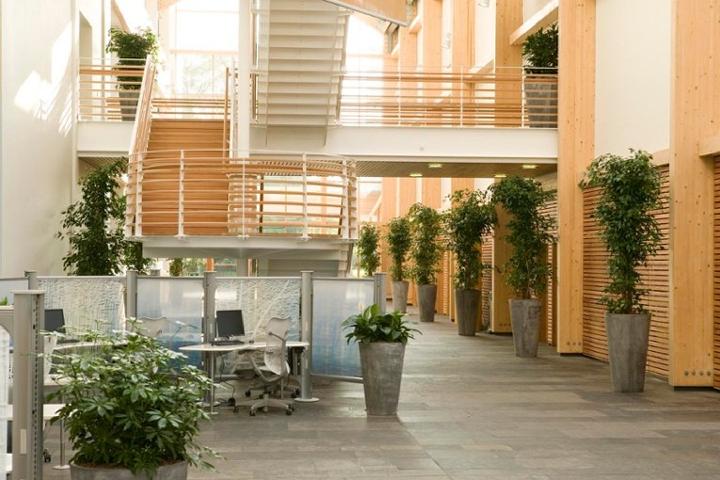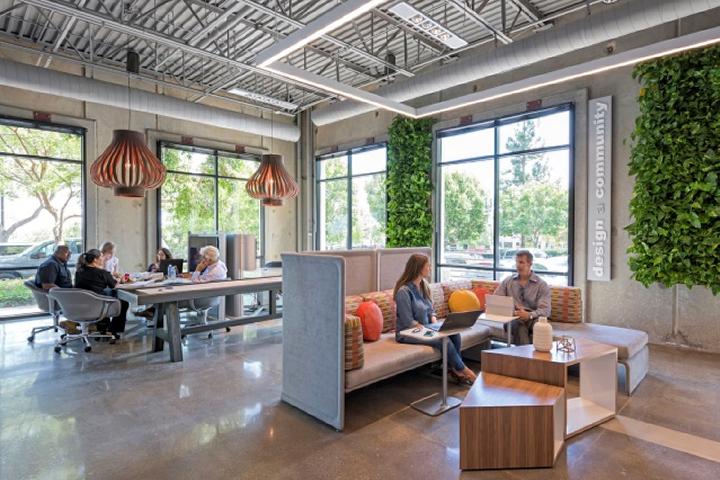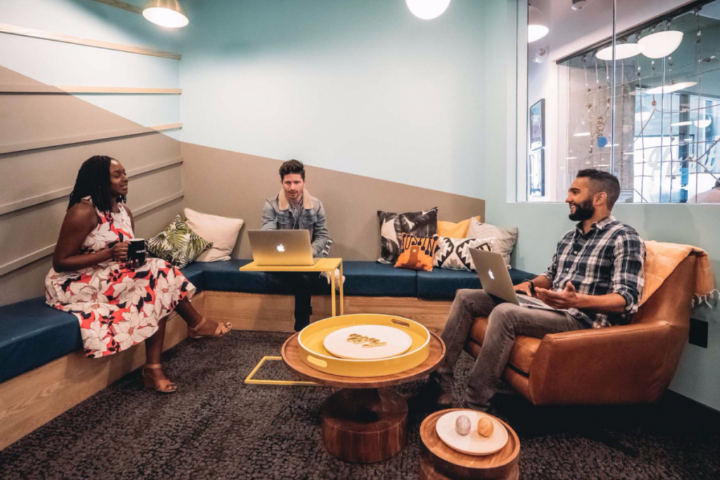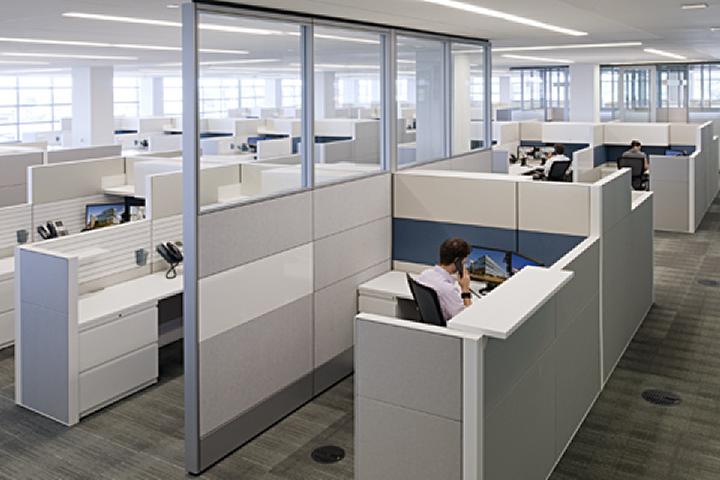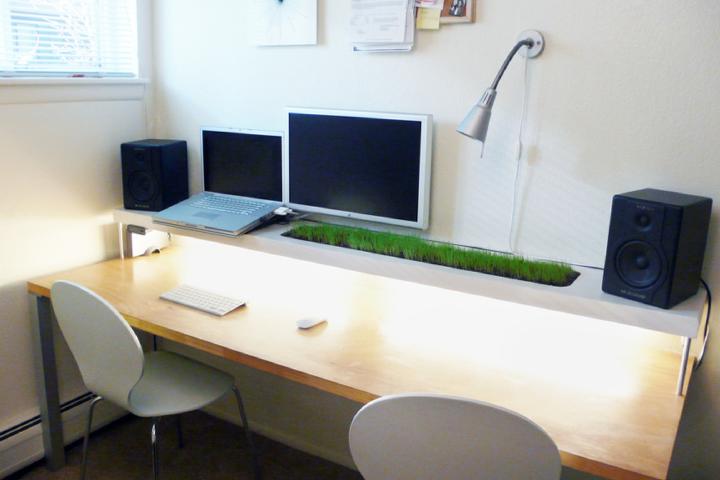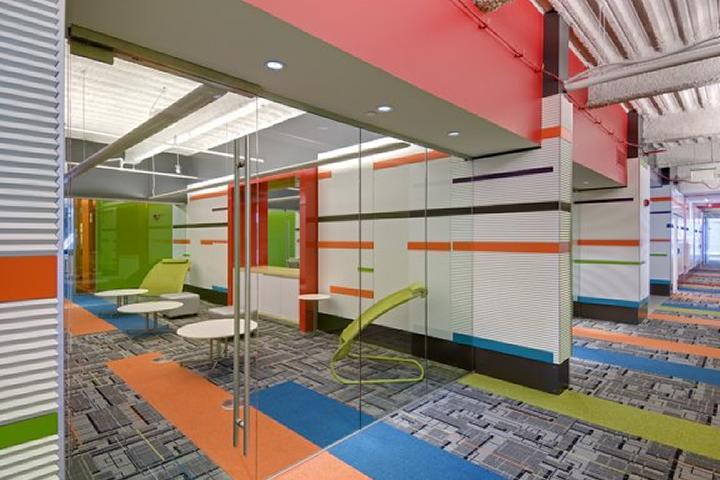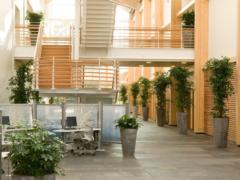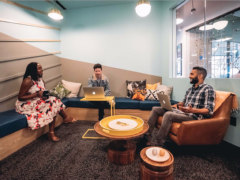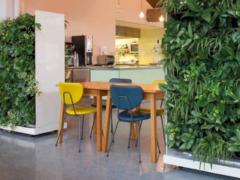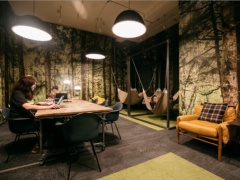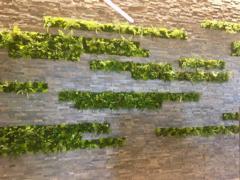W e get to see a lot of workplaces all year long, and we get to work with a lot of smart architects and interior designers creating the modern workplace. We also talk a lot about what the ideal workplace of the future SHOULD look like when I get together with my fellow interior plantscapers and WELL Building Standard advocates across the country.
There are plenty of studies where people have told us what they like, and also telling us what makes people more productive, more creative, and more content at work.
With 2018 nearly on top of us (how did THIS happen?), we offer our fearless predictions about the top trends for successful workplace design.
Conference Rooms That Aren’t So Cold
Most conference rooms feature a huge flat table to accommodate meetings of a dozen or more people. They might have technology for presentations or access by offsite participants. Beyond this, they’re generally given little thought.
These cold, dreary conference rooms sit empty most of the time. They aren’t conducive to creativity or even collaboration. It’s time to rethink the old conference room. Take out the big table. Add couches and chairs. Bring people closer together, literally. You can still hang a flat screen on the wall for presentations. Give it the feeling of a coffee house or living room. Your employees will loosen up, and speak up. Co-working spaces like WeWork are embracing this idea already.
The Love Affair With the Open Floorplan is Over
Can we get over this productivity killer already? I’m not naïve enough to think open floorplans are going to disappear. The days of individual offices are over, because open floorplans are too cost efficient. But we need to add in interior design elements to break up the visual and noise distractions so your employees aren’t all sitting there wearing earbuds or headphones ignoring each other so they can focus. Using plants and other natural elements to construct dividers, movable panels, or privacy screens can go a long way toward solving these issues.
Keep it Moving
Workspace flexibility is increasingly important Businesses need to be able to change direction quickly to allow their employees to meet their clients’ needs. Interior designers call this approach “dynamic spaces.” Dynamic spaces can be instantly transformed when needed. Today, it’s a space for a client demonstration. Tomorrow, it’s individual workspaces. Using movable furniture, large openings and doors, movable living wall dividers, easily repositioned chalkboard, whiteboard, or electronics, and lots of plants and containers let employees try new things in innovative ways, which led directly to this trend.
Minimize The Mess
Yes, we all know Einstein, Mark Twain, and Mark Zuckerberg are famous for having messy desks. Studies show geniuses often have messy desks. I’ve got news for you: despite what your Mom says, you’re probably NOT a genius. You need to rely on being a little more organized. In the flexible workplace of today, your messy desk is someone else’s distraction too. Cleaning up means you’ve got less to try and keep organized, and it will also force you to use less paper which is good for the planet and your sanity too. It will give you room for a plant on your desk, always a good thing!
Lighten Up at Work
Take this one literally. The more natural light you can let into the workplace, the better. Numerous studies including one by the Natural Renewable Energy Laboratory proves people are more productive and creative in settings where there is a great deal of natural light. And here’s a tip: customers spend more time and money in stores when there is more natural light, too. We know it’s not always realistic in modern office buildings to add windows or skylights. But you should make sure windows are uncovered when possible during the workday. Clean windows and skylights regularly. Replace your cold fluorescent lighting with warmer toned natural spectrum lighting. If natural light is a challenge, it’s better to light spaces with indirect light whenever you can. Try to come up with ways to bounce natural light off light colored walls or mirrors instead of shining directly on workspaces.
Chill Out in Workplace Caves
I might seem like I’m contradicting myself here. Businesses are adding back cozy, comfortable, private spaces for their employees to get away from their colleagues in the open floorplan to focus and chill out. In a survey of 1,500 British office workers , 74 percent said they didn’t have a “chill out” area at work. Picture the cozy corner of a coffeehouse, library, or a quiet reading room in someone’s home. Once again, many progressive co-working spaces are creating areas like this in their facilities. Some businesses are adding restaurant or phone booth style cubbies for workers to be alone and reduce distractions. Where do we all want to sit in restaurants? The booths, right? Expect more of these to pop up in the year ahead.
Stand Up For Yourself
We now understand you shouldn’t be chained to a chair all day at work. Sitting for long periods of time is detrimental to your health. The well-designed workplace goes beyond giving your employees standup desks. Figure out how to get them moving around.
Employees should have spaces encouraging them to take a walk. Let them meet their hourly Fitbit goals and stroll around the building, or walk a little distance to a lounge area. Create areas where employees can move for part of the workday with a phone, tablet or laptop and have a change of scene. Even better, put some plants, a water feature, or even an aquarium to change the mood. They’ll feel like most well-designed office will make employees unproductive if they feel chained to their desks. Make sure that employees have the space to get up and take a walk occasionally, or maybe a lounge area where they can get a little work done without sitting in the same place all day. They’ll recharge without resorting to a mid-afternoon caffeine fix.
Living Walls That’s Aren’t Alive OR Walls
It would be great if every workplace could add a living wall. But this isn’t practical at every workplace for many reasons: structural engineering limitations, limitations in growing conditions or irrigation.
There are several workarounds for these limitations and they’re catching on. At the top of the list are moss walls, which aren’t living and don’t require the same growing conditions as walls with living plants. They’re much lighter and can be installed nearly anywhere. Another option is a combination of real plants, artificial plants, and moss wall artwork in baskets or in groupings on a wall covered with natural materials that looks like a full living wall. The above example shows a hybrid wall Good Earth Plant Company installed this year.
Color Leads to Colorful Ideas
Dull, monochromatic workspaces kill creativity. Offices who can’t make the investment in redesigning floor plans or adding windows CAN change the color scheme. It’s the quickest, easiest, and most inexpensive fix. As businesses realize they’ve got to get on board with biophilic design principles, adding color can be the first step. Paint, artwork, and plants can all help people maximize their productivity at work. So go green – or blue – or sunny yellow!
Biophilic Design Goes Mainstream
Biophilic design is a philosophy based on real science proven by more and more studies every year. As people spend more and more time indoors (up to 90 percent), biophilic design must become a standard best practice for the people who design and build the places where we work and live. The WELL Building Standard is helping raise awareness and provides simple guidelines based on biophilic principles anyone can understand. Integrating those standards into workplaces will become common. It goes beyond just a few plants. Integrating nature into human spaces through light, color, materials, patterns, textures, sounds and living plants is being embraced by the tech industry. Where organizations like Alphabet (Google) and Amazon go, others will follow.
Progressive businesses can’t afford to lose their best employees because their offices are soul-sucking gray dungeons. Do I exaggerate? Not at all!

